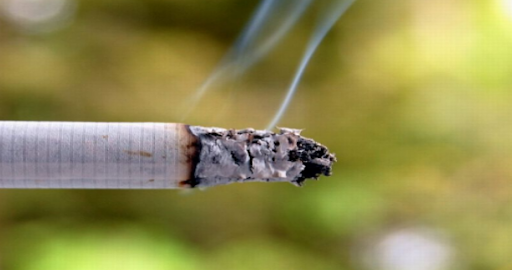 NEW YORK (Reuters Healthiness) – After a cardiac event, quitting smoking may proffer a patient more benefits than any medicine, however Italian research experts state the flipside is that resuming smoking after leaving the healthcare facility could raise the same patient’s possibility of dying to the amount that 5-fold.
NEW YORK (Reuters Healthiness) – After a cardiac event, quitting smoking may proffer a patient more benefits than any medicine, however Italian research experts state the flipside is that resuming smoking after leaving the healthcare facility could raise the same patient’s possibility of dying to the amount that 5-fold.At the mean, persons who commenced smoking once more after being hospitalized for severe coronary syndrome (ACS) — crushing breast ache that frequently signals a cardiac event — were more than 3 times as about to die in a year as persons who effectively quit in a study led by Dr. Furio Colivicchi of San Filippo Neri Healthcare Facility in Rome.
“Relapse is a major risk reason for long period survival,” said Dr. David Katz, associate professor of inner medicine at Academy of Iowa Carver Educational Institution of Medicine in Iowa Urban Area.
Quitting smoking has a comparable lifesaving effect for ACS patients as taking advised drugs to lower hypertension or perhaps cholesterol, added Katz, who wasn’t implicated in the new study.
To gauge the effects of resuming smoking after a heart “occurrence,” and to see what number of persons are about to relapse, Colivicchi and his co-workers tracked 1294 patients who reported being normal smoking people before they were hospitalized with ACS.
Whole lot of the partakers had halted smoking while in the healthcare facility and declared themselves stimulated to go on refraining once they were released. Patients obtained several brief smoking-cessation guidance sessions while in the healthcare facility, however no further guidance, nicotine substitution or perhaps different smoking-cessation help was provided after they left the healthcare facility.
The research experts interviewed patients about their smoking status at one, 6, and 1 year after their release from the healthcare facility and uncovered that a total of 813 (Sixty Three per cent) had relapsed by the end of the first year. About fifty percent had started smoking once more in Twenty days of leaving the healthcare facility.
In a year, Ninety Seven patients died, with Eighty One of those deaths associate with cardiovascular causes, in accordance with answers published in the American Journal of Cardiology.
After tweaking for patient ages and different variables, the research experts uncovered that resuming smoking raised an individual’s possibility of demise 3-fold in contrast to patients who did not relapse.
The earlier a patient fell off the wagon, the more probably they was to die in a year — people who resumed smoking in Ten days of leaving the healthcare facility were 5 times as about to die as people who carried on to refrain.
Quite few patients relapsed after being smoke-free for 6 months.
“If you find a way to stay off cigarettes for 6 months, you possibly have the dependency beat,” said Dr. Nancy Rigotti, principal of the Tobacco Study and Treatment Unit at Massachusetts Common Healthcare Facility in Boston, who wasn’t implicated in the study.
Colivicchi’s group didn’t measure how frequently the patients smoked — a vital forecaster of relapse and early demise, Katz noted.
Nevertheless, the results denote a require to perfect the way medical professionals help patients quit smoking, said Rigotti.
“Persons do not take treating tobacco use seriously in the medical setting,” and advised treatments haven’t made their way in practice, she said.
Colivicchi agreed. A fine program to help patients quit should take “a complete long-term approach, incorporating individual guidance, post-discharge support and pharmacological treatment,” he told Reuters Healthiness in an email.
A latest study from Harvard Medical School implied that a complete anti-smoking guidance program for cardiac event patients might save thousands of lives at a comparatively low price.
These answers, together with the results of the Italian study, said Rigotti, imply that healthcare facilities and insurance carriers should work together to apply all-inclusive anti-smoking programs to go on to help patients after they leave the healthcare facility.
SOURCE: bit.ly/nbuaPz American Journal of Cardiology, on-line July Seven, 2011.







 11:29 PM
11:29 PM
 Kat
Kat




